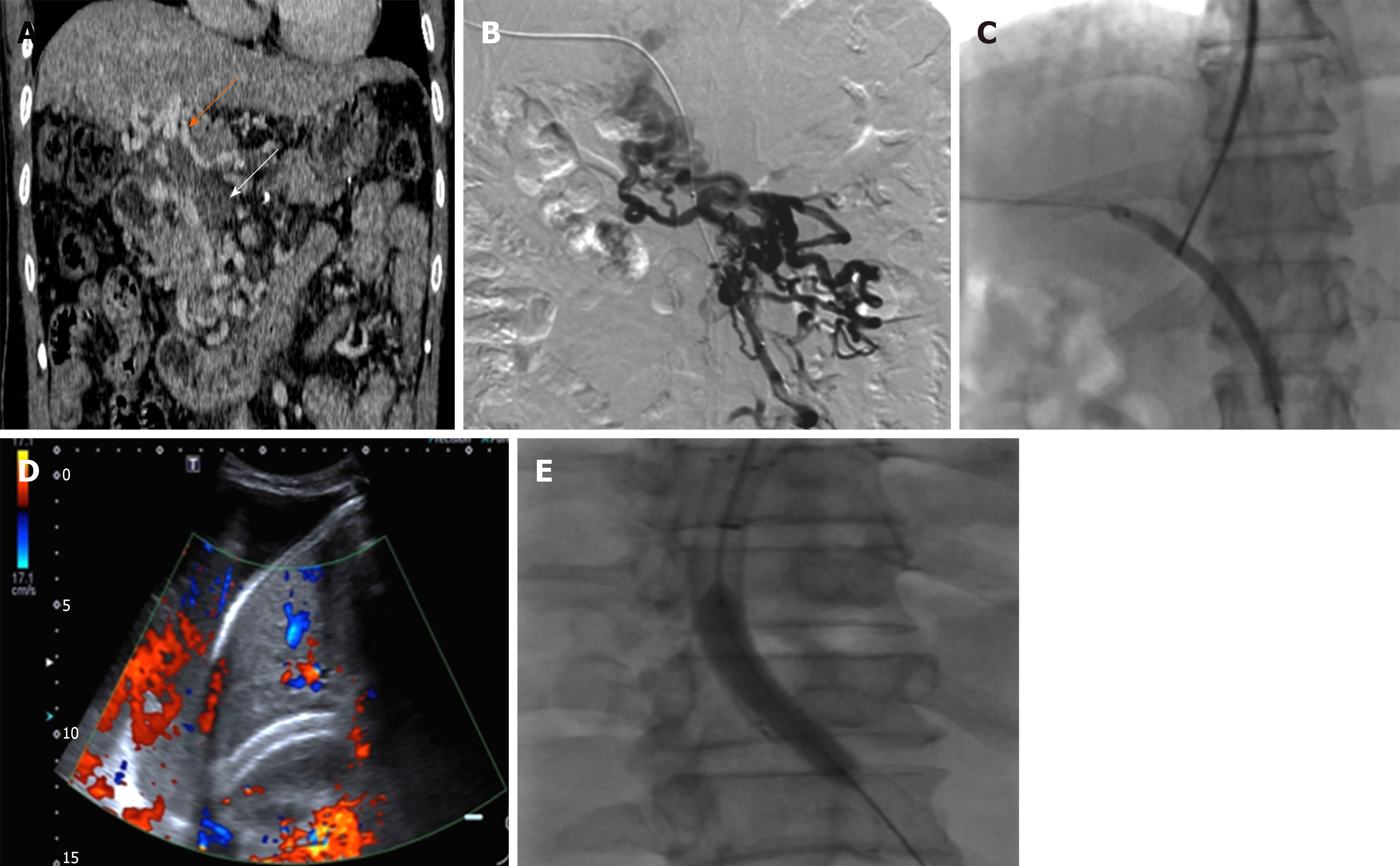Copyright
©The Author(s) 2020.
World J Clin Cases. Mar 6, 2020; 8(5): 887-899
Published online Mar 6, 2020. doi: 10.12998/wjcc.v8.i5.887
Published online Mar 6, 2020. doi: 10.12998/wjcc.v8.i5.887
Figure 2 A 54-year-old man with refractory ascites who underwent transjugular intrahepatic portosystemic shunt.
A: Contrast-enhanced coronal portal venous phase computed tomography image shows complete nonvisualization of the main portal vein (cavernous transformation of the portal vein score is 4); B: Percutaneous trans-hepatic portography demonstrated the same appearance as computed tomography; C: Balloon-assisted shunt creation; D: The patient developed massive ascites 9 mo later after shunt creation. Doppler ultrasonography revealed absent flow in the shunt; E: After balloon-assisted transjugular intrahepatic portosystemic shunt revision, stent-graft was patent and the patient was asymptomatic at the 18-mo follow-up.
- Citation: Niu XK, Das SK, Wu HL, Chen Y. Computed tomography-based score model/nomogram for predicting technical and midterm outcomes in transjugular intrahepatic portosystemic shunt treatment for symptomatic portal cavernoma. World J Clin Cases 2020; 8(5): 887-899
- URL: https://www.wjgnet.com/2307-8960/full/v8/i5/887.htm
- DOI: https://dx.doi.org/10.12998/wjcc.v8.i5.887









